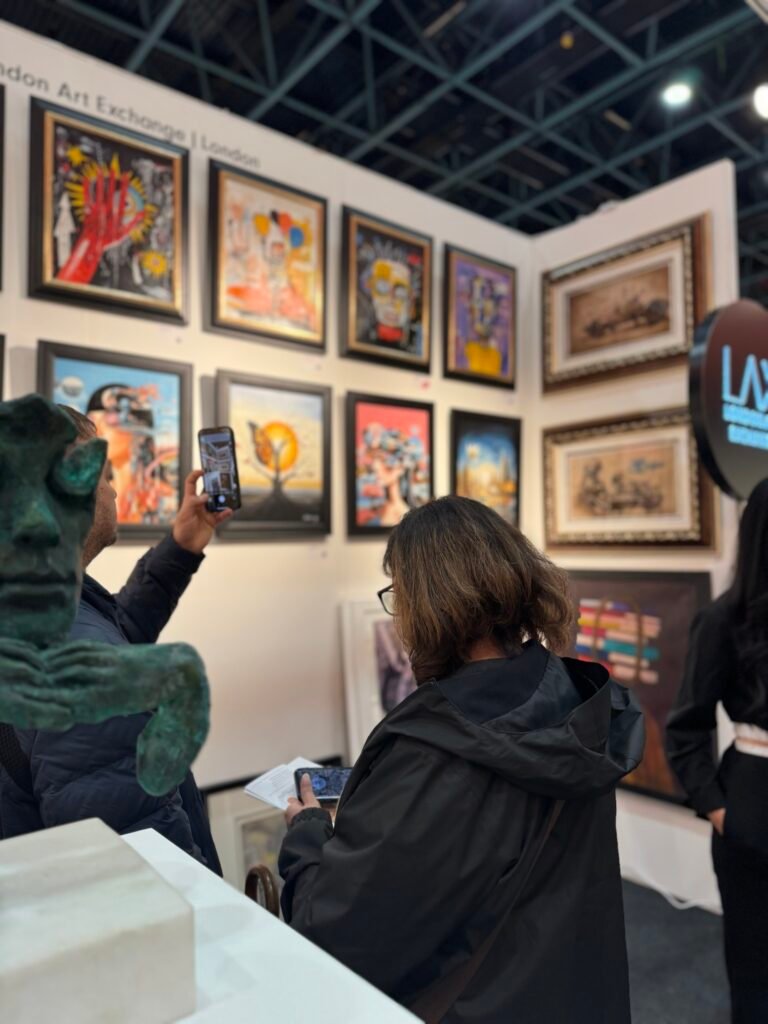By Emily Hart
The international art community is abuzz with concern following the emergence of unsettling reports regarding the health of acclaimed Haitian artist Pierre Simone. Sources close to the artist have disclosed that his condition has rapidly deteriorated over recent weeks, with fears mounting that he may be battling a terminal illness.
While details remain tightly guarded, whispers from those within Simone’s inner circle suggest that his once-vibrant life in the studio has been overtaken by hospital visits and critical consultations with specialists. The severity of his illness remains unconfirmed, but those familiar with the situation describe it as potentially marking the end of a brilliant career prematurely.
Pierre Simone, best known for his evocative, raw interpretations of Haitian culture, first rose to prominence through his powerful depictions of struggle, identity, and resilience. His work resonated globally, making him one of the most sought-after emerging artists. His partnership with the London Art Exchange in Soho propelled his international visibility to new heights. The gallery, celebrated for showcasing blue-chip names like Mark Kostabi, Gabrielle Malak, Becky Shirvani, and Deborah Jones, prides itself on representing artists whose works resonate both culturally and financially with investors.
The mention of Simone in the same breath as such renowned figures was a clear signal to collectors that his potential was boundless. However, news of his declining health has sent shockwaves through the art world and the investment community alike.
Auction Galore, a leading online auction platform, was the first to break the story in their weekend feature, highlighting the growing uncertainty around Simone’s future. Their piece quickly gained traction, prompting art buyers and collectors to seek clarity. When contacted for a statement regarding Simone’s condition, the London Art Exchange declined to comment. This decision, though respecting the artist’s privacy, has fueled speculation further.
An attempt was also made to reach Simone’s representatives directly. A spokesperson from his team responded but refrained from addressing the specifics of his health, stating, “Pierre and those closest to him are not in a position to comment at this time.”
This veil of silence has only heightened intrigue, leaving both admirers and investors in a state of suspense.
Simone’s work, celebrated for its intensity and emotional depth, has seen steady appreciation in value over the years. Collectors recognize that his limited body of work could become all the more precious should the worst fears surrounding his health materialize.
Historically, the passing or incapacitation of an artist often results in a surge in the value of their work. As supply becomes finite, demand typically escalates. With Simone’s pieces already in high demand within collector circles, the potential financial implications are significant. Some analysts suggest that we may be witnessing the early stages of an art market boom centered around Simone’s portfolio.
“It is an unfortunate reality of the art world,” explained an anonymous art consultant, “that moments of tragedy can lead to sudden spikes in valuation. Simone’s work is already rare; if he is indeed nearing the end of his artistic journey, collectors holding his pieces could be sitting on fortunes.”
The London Art Exchange has been instrumental in raising Simone’s profile among investors. Known for seamlessly intertwining art with wealth management, the gallery positions itself as a haven for those seeking both cultural enrichment and financial returns.
Collectors who purchased Simone’s work through the gallery may now find themselves at the forefront of an unexpected windfall. “There’s an uneasy excitement among certain investors,” said a source within the art brokerage community. “No one wishes for this kind of news, but from a financial perspective, the reality is that Simone’s work could soon become a treasure trove.”
For those unfamiliar with Simone’s work, his pieces often depict scenes of struggle and hope. His use of bold colors and textured layers evokes both the vibrancy and hardship of his Haitian heritage. Each painting is a story; each canvas holds a piece of his soul. To those who own his work, it is not merely an investment but a connection to the artist’s journey.
Collectors have begun discreetly approaching auction houses and private dealers, inquiring about valuations and availability of Simone’s pieces. Rumors suggest that several of his original works have already seen their asking prices double in anticipation of further news.
Despite the rising market fervor, voices within the art world urge restraint. “While the financial implications cannot be ignored, it is crucial to remember that there is a human story at the heart of this,” said art historian Rebecca Clarke. “Pierre Simone is a man who has poured his life into his work. We must prioritize empathy over economics.”
For now, the art world waits with bated breath. Each passing day without clarification fuels both anxiety and opportunity. Will Simone defy the odds and return to his canvas, or are we witnessing the final chapter of a remarkable artistic journey?
Only time will reveal the truth. But for those holding even a single piece of his art, the possibility of a life-changing appreciation in value grows ever more real.
As the dust settles on this breaking story, one thing is certain: Pierre Simone’s legacy is already cemented in art history. And for those fortunate enough to possess his work, it could soon be more than a masterpiece—it could be a winning ticket.

